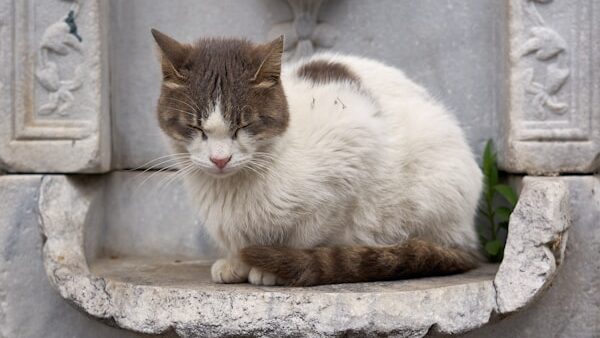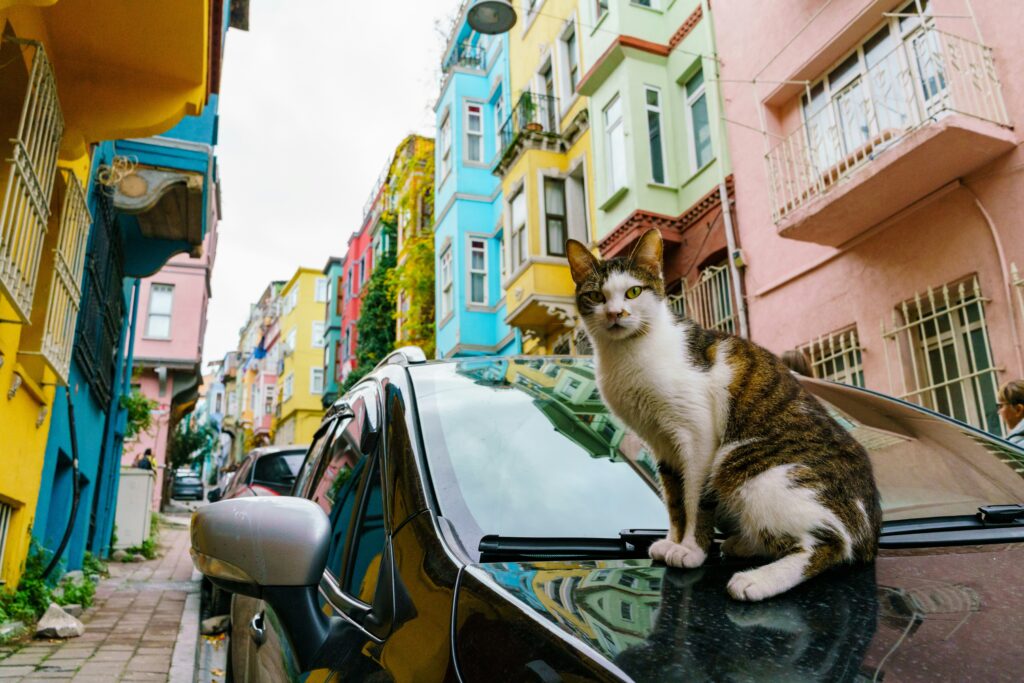
Cat Population in Istanbul
The cat population in Istanbul reflects the city’s unique relationship with animals and its vibrant community culture. Estimates suggest there are more than 100,000 stray and community cats across the city. Cats are a beloved symbol of daily life, visible in neighborhoods, markets, and even historic landmarks.
Table Of Content
- Why the Cat Population in Istanbul Is So Large
- Cultural Reasons
- Environmental and Historical Factors
- Informal Feeding Networks and Mobility
- Challenges Faced by Istanbul’s Cats
- Overpopulation and Health Risks
- Dangers from traffic and cruelty
- Impact on wildlife and public health
- Municipal Response and TNR Programs
- Trap‑neuter‑return (TNR) initiatives
- Vaccination and disease control
- Municipal and NGO partnerships
- Community involvement and local solutions
- Role of local residents
- Education and awareness
- Businesses and tourism
- Looking forward: policy and coexistence
- Collaboration and planning
- Expanding humane practices
- Balancing welfare and biodiversity
- A city shaped by cats and people
- Related Posts
Their story highlights Istanbul’s history, environment, and the strong spirit of coexistence between people and animals. In 2023 alone, municipal TNR (trap-neuter-return) programs reported tens of thousands of sterilizations, underscoring both the scale of the challenge and the city’s commitment to humane management.
Why the Cat Population in Istanbul Is So Large
Cultural Reasons
Culturally, cats have long been respected in the region. Islamic tradition includes compassionate stories about animals; cats, in particular, are often viewed positively. This religious and cultural acceptance means that many residents treat cats kindly and tolerate them in public and private spaces.
Environmental and Historical Factors
Istanbul’s dense urban fabric with countless nooks — from courtyards and basements to rooftop terraces and old stone walls — creates ample shelter. The climate is also relatively mild compared to parts of Turkey with harsher winters, which supports year-round survival for stray and community cats. Historically, as cities grew and shipping intensified, cats were often kept near warehouses and homes to control rodents, and some of those populations persisted and adapted to modern urban life.
Informal Feeding Networks and Mobility
Another important factor is the informal feeding networks spread across neighborhoods. Residents, shopkeepers, and commuters often leave water and scraps, creating localized food sources that support feral and semi-feral cat colonies. Finally, the mobility of people and goods across Istanbul — ferries, buses, and bustling markets — unintentionally help cats move and colonize new microhabitats across the city.
Challenges Faced by Istanbul’s Cats
Overpopulation and Health Risks
Uncontrolled breeding leads to overcrowding, disease spread, and competition for dwindling resources in some neighborhoods. These conditions can weaken overall cat health and create suffering among colonies.

Dangers from traffic and cruelty
Injuries from traffic accidents and occasional human cruelty are also significant challenges. Stray cats navigating busy streets often face life‑threatening risks.
Impact on wildlife and public health
Unregulated cat populations can disrupt local wildlife by hunting birds and small animals. Additionally, unmanaged colonies may contribute to public‑health concerns if not addressed responsibly.
Municipal Response and TNR Programs
Trap‑neuter‑return (TNR) initiatives
Many municipalities, animal welfare groups, and volunteers run TNR programs to control population growth humanely. TNR involves trapping cats, sterilizing them, and returning them to their colonies. It’s widely regarded by vets and animal‑welfare organizations as the most ethical and effective long‑term solution for managing stray cat populations in urban settings.
Vaccination and disease control
In recent years, coordinated vaccination drives have reduced the spread of rabies and other contagious diseases among stray cat populations. These programs not only protect cats but also support broader public health.
Municipal and NGO partnerships
The city and civil society have responded with diverse programs and practices to mitigate these problems. Partnerships between municipalities, NGOs, and volunteers strengthen resources, create awareness, and ensure that welfare practices reach more neighborhoods.
Community involvement and local solutions
Role of local residents
Community involvement remains critical. Local residents play an enormous role in daily care — providing food, temporary shelter, and reporting injured animals to rescue groups.
Education and awareness
Public education campaigns that promote responsible feeding, neutering, and safe coexistence help shift behavior in the long term. These initiatives encourage people to see themselves as guardians of community cats rather than passive observers.
Businesses and tourism
Businesses and tourist sites have likewise adapted: many cafes and shops welcome cats, often providing sheltered spots and water bowls. For tourists, these encounters create memorable impressions, reinforcing the image of Istanbul as a cat‑friendly city.
Looking forward: policy and coexistence
Collaboration and planning
Looking forward, the future of Istanbul’s cats depends on continued collaboration between municipal authorities, veterinarians, NGOs, and local communities.
Expanding humane practices
Expanding TNR coverage, improving waste management (to reduce scavenging incentives), and integrating animal welfare into urban planning are practical steps that can strengthen sustainability.
Balancing welfare and biodiversity
At the same time, balancing cat welfare with biodiversity and public health considerations will require thoughtful policies and neighborhood‑level dialogue.
A city shaped by cats and people
In short, the cats of Istanbul are more than an Instagram trope — they are part of the city’s living fabric, shaped by history, culture, and modern civic action. With humane management and broad community support, Istanbul can remain a place where humans and felines coexist in a way that respects both animal welfare and urban sustainability.
Ultimately, sustaining the cat population in Istanbul will require a balance of compassion, effective policy and community involvement.
This unique balance will help the cat population in Istanbul thrive for years to come.
As the cat population in Istanbul continues to grow, it has become an iconic symbol of the city.

